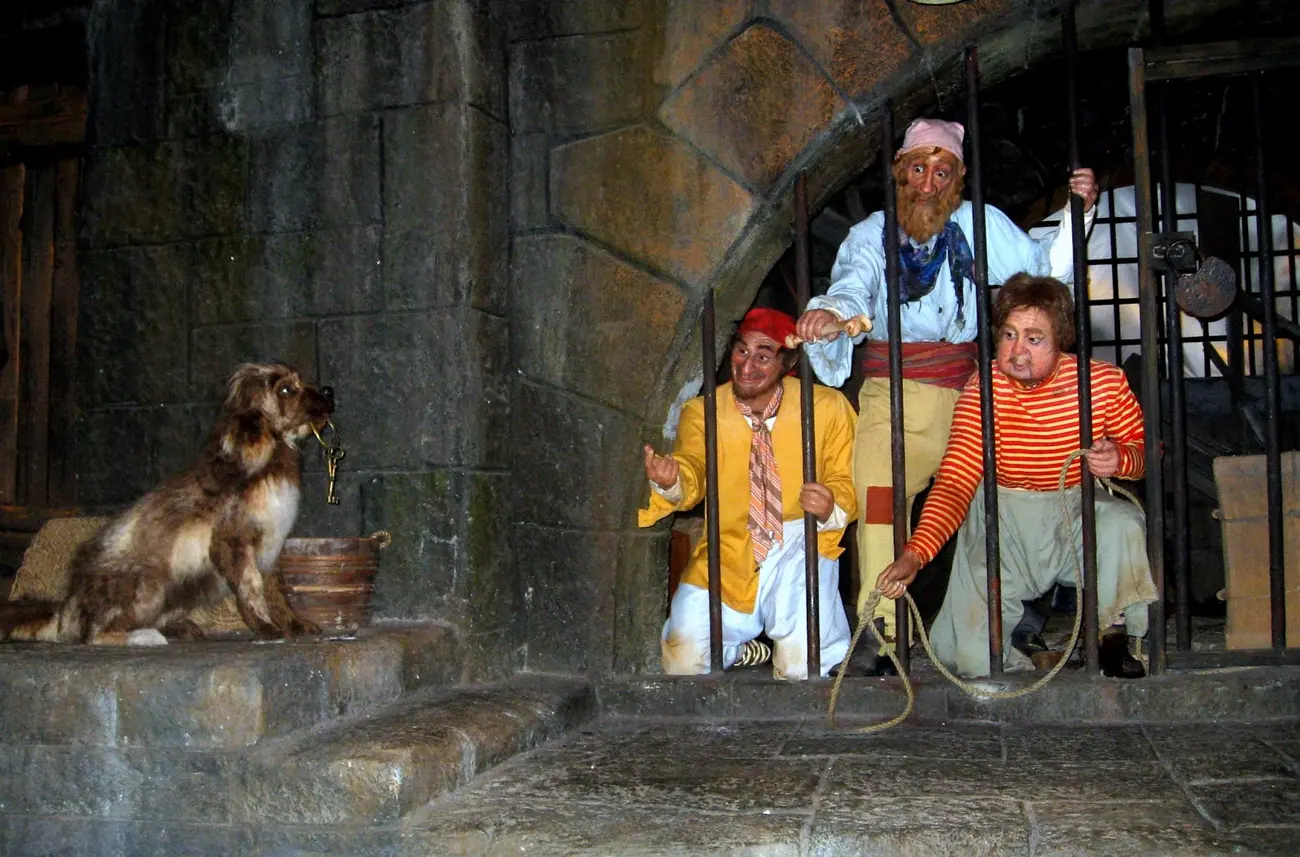Pirates have been romanticized in popular culture for more than a century.
We get our ideas about what pirates were like from sources such as the Robert Louis Stevenson novel “Treasure Island,” the Gilbert and Sullivan operetta “Pirates of Penzance,” and the fairytale “Peter Pan.” Dozens of films portray swashbuckling men of the sea, most recently the “Pirates of the Caribbean” series.
Most of what we think we know about pirates, based on these and other popular sources, is false. Take the concept of walking the plank.
“A lot of it has been fabricated by Hollywood and books and plays, and walking the plank is something that has never been documented in historical record,” says Zach Zacharias, senior curator of education and curator of history at the Museum of Arts and Sciences in Daytona Beach. “If they wanted to get rid of you, they just threw you off the ship.”
It is common for pirate stories to feature a map with an “X” marking the spot where buried treasure is located. According to Zacharias, such maps did not exist.
“There’s no treasure map that’s ever been found,” says Zacharias.
That makes the idea of buried treasure another myth.
“They wouldn’t bury their money because it wasn’t useful for them. They wanted to spend their money. They spent a lot of their money when they went into port, and burying it doesn’t do any good. You probably wouldn’t even find it again on a small island.”
Zacharias says that the stereotypical pirate with a peg leg, hook hand, and eye patch is also not likely.
“Not likely at all. That’s not to say that maybe somewhere on a ship there was somebody who was missing an arm or had an eye poked out and survived that, but for the most part that was not the norm at all. It’s not really true.”
Many fictional pirates have talking birds on their shoulders. Real ones did not.
“Talking birds are very entertaining and I can see why Hollywood would love that,” says Zacharias. “Some pirates would capture exotic birds, but they sold them at the next port town or market, and they didn’t train them to sit on their shoulders and say goofy things.”
So, no walking the plank. No buried treasure or maps with an “X” marking the spot. Probably no peg legs, hooks for hands, or eye patches. No talking birds for comic relief. Is all that singing and drinking real?
“Again, you definitely see that in the pirate movies and stories with everybody singing and swinging from ropes and drinking,” says Zacharias. “Actually, they had to sail the ship, so they couldn’t be drunk or drinking all the time.”
At least one of our popular ideas about pirates is true. They did have scary flags with skulls and crossed bones.
“They did have the Jolly Roger, they did have pirate flags, and they were used to intimidate,” says Zacharias. “What they really wanted to do was scare you into giving up. Pirates didn’t want to fight, because a small cut from a cutlass sword could become infected and you could die out at sea. They didn’t have antibiotics, and they didn’t want to fight unless they had to.”
Pirates began raiding Florida’s coast when the first Europeans settled here in the 1500s. When pirates were given permission to raid and pillage Florida towns on behalf of a government, they were called privateers.
As political situations changed in Florida’s Spanish colonial period, privateers could quickly revert back to being pirates.
“The Spanish were fair game for everybody, from the Dutch, to the French, to the English,” says Zacharias.
As the oldest permanent European settlement in North America, St. Augustine was a particularly favorite target for pirates and privateers. An attack by English privateer Sir Francis Drake in 1586, resulted in the town being burned to the ground.
In 1668, Jamaican pirate Robert Searle raided and sacked St. Augustine. On Saturday, March 7, 2015, historic reenactors presented their annual depiction of Searle’s plunder of St. Augustine, offering a realistic portrayal of pirates in Florida.
If you prefer your pirates fictionalized, you can always visit the Pirates of the Caribbean at Disney World.
Dr. Ben Brotemarkle is executive director of the Florida Historical Society and host of the radio program “Florida Frontiers,” broadcast locally on 90.7 WMFE Thursday evenings at 6:30 and Sunday afternoons at 4:00, and on 89.5 WFIT Sunday mornings at 7:00. The show can be heard online at myfloridahistory.org.

